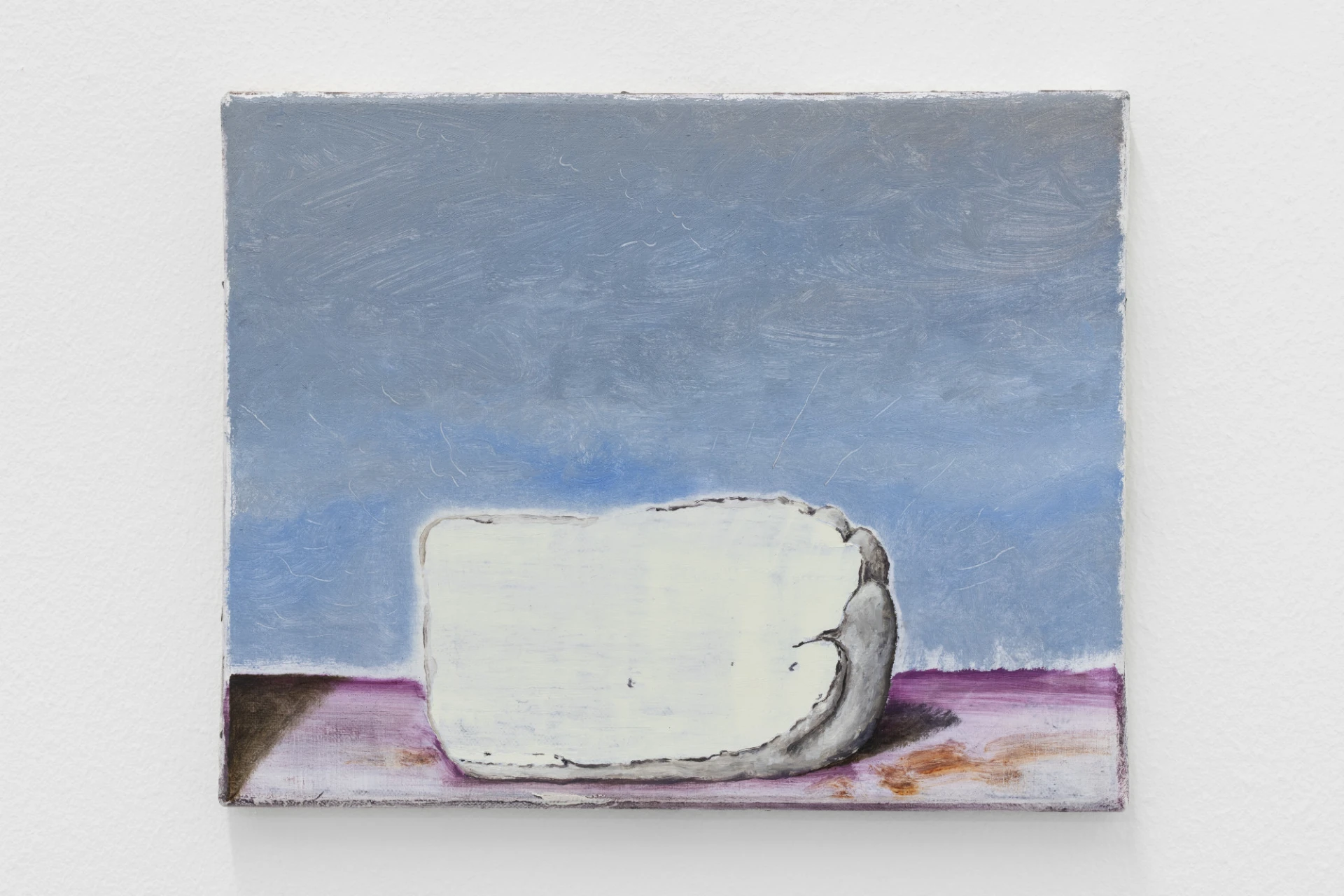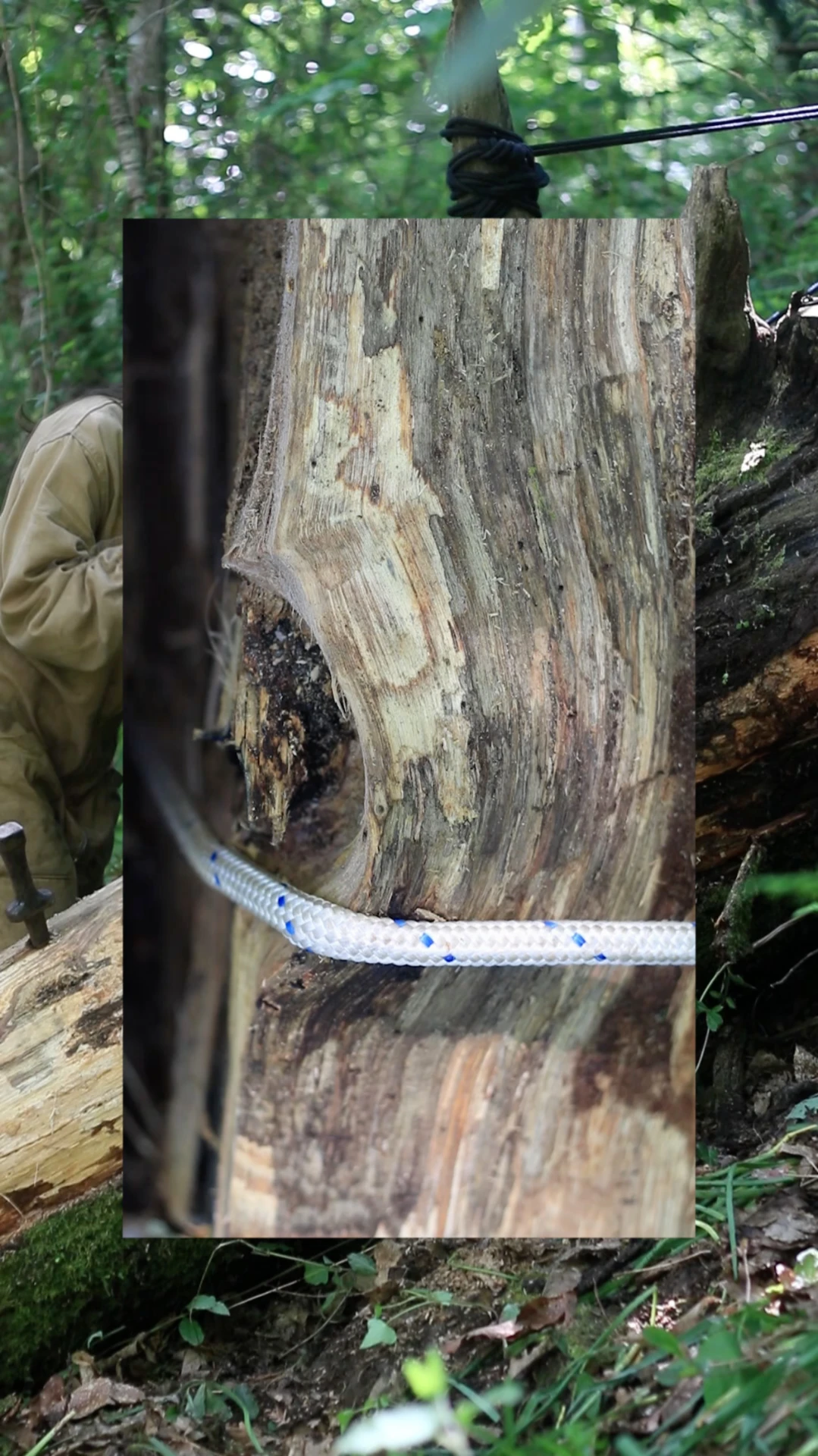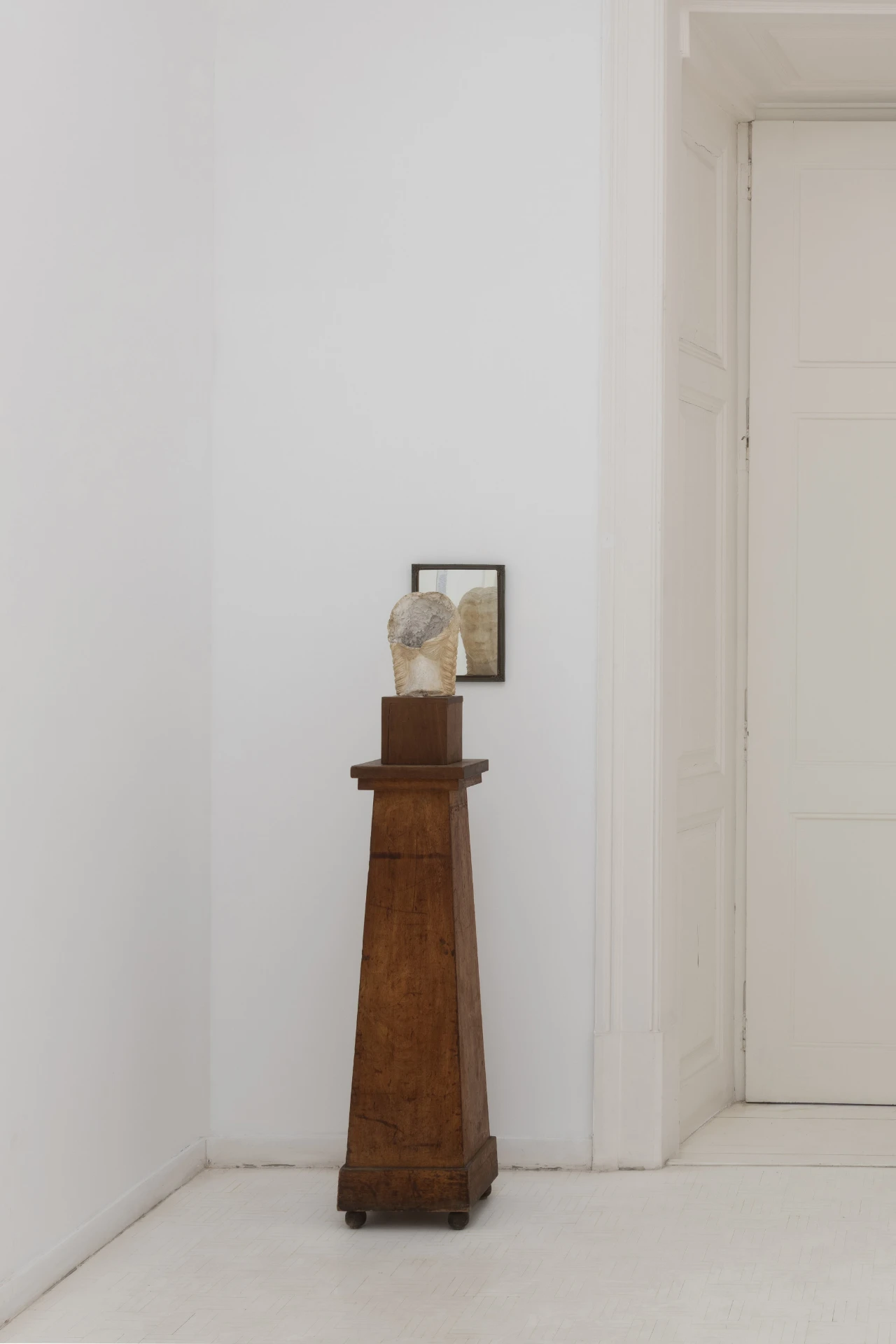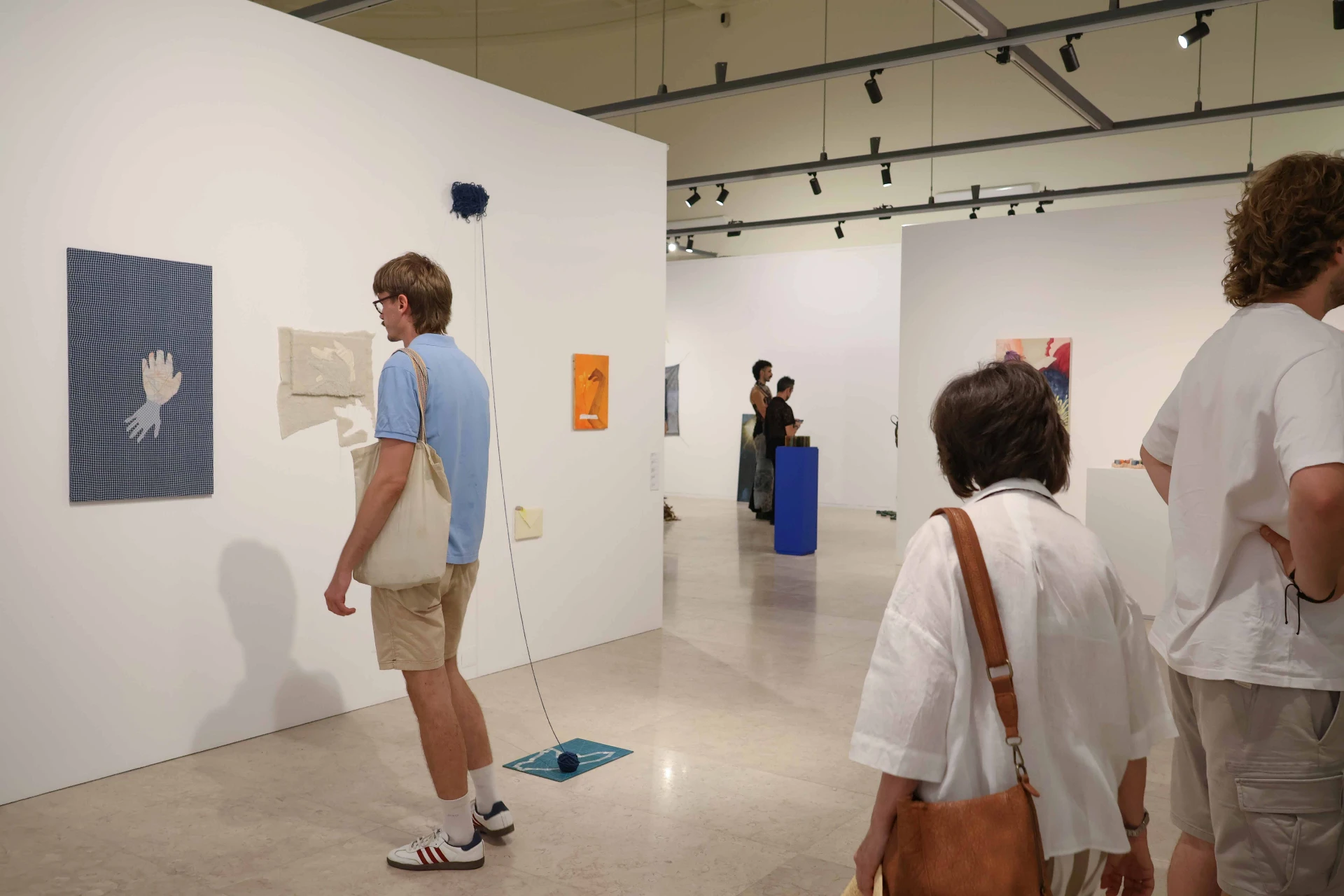article
The weeping rock, at 3+1 Arte Contemporânea
When we enter Tiago Baptista's exhibition, The weeping rock, on display at the 3+1 Arte Contemporânea gallery, it feels like entering a forest, comprised of small paintings, interrupted in space by tubular shapes that stretch and hang vertically.
The exhibition takes us into a world of languid and slow gastropod mollusks punctuating the space, preceded by leaves and fungi, also covered and painted in acrylic in childlike tones: blue, violet, and pink, in soft notes. In the blink of an eye, we are transported to Holz, Heidegger's forest, where undulating paths, interspersed with shadows, lead us to the unknown, the mysterious, the still untrodden.
The exhibition also reminds us, according to the same philosopher, of the circular nature of art and how staying in this place results in a “celebration of thought.” We are struck by the idea of the work of art and how unquestionable its property as a thing is, a thing that can be made of wood or a thing that can be made of metal. We recognize the property of things in the tubular pieces created by the artist, such as the work lembrança escorre brota, 2025, or sois por ali acima, 2025, covered in acrylic paint. But we also recognize the artist's works as being made of something else, not things, but something else, of which the work is constituted, or something to which something else still adheres, provided by the artist. It is in this other, or in the search for this something else, that we become entangled in Tiago Baptista's work. We are faced with the matter of which things are made, we encounter the things themselves (their thingness) and also the allegory, or the place of metaphor, which is the property of the work of art.
In its specificity, on the one hand, and also in terms of the thingness of the work, we could talk about painting as the privileged place of color: “but even the much-vaunted aesthetic experience cannot get around the thingly aspect of the artwork. There is something stony in a work of architecture, wooden in a carving, colored in a painting.”(Heidegger, 11).
Greenberg, on the other hand, told us about the planes of the painting themselves (facet planes) and their frontal properties, the transition from object to background becoming less and less abrupt: The cubists ended up doing with form what the impressionists, when they precipitated their objects out of a mist of paint flecks, had only begun to do with color – they erased the old distinction between object in front of background and background behind and around object, erased it at least as something felt rather than merely read.
Tiago Batista's painting, featured in the exhibition, also embraces this condition of plane, intertwined with the referent, natural or artificial, through the play of simultaneity between three-dimensionality and two-dimensionality, between background and form, and their reversibility.
Oppositions between natural and artificial, organic and synthetic, memory and instant, time and present moment, fixation of the moment, movement and static, found object (Objet Trouvé) and its representation in painting.
Color, stain, and the canvas's flatness. The painting is also treated according to its intrinsic nature.
Furthermore, nature is a strong presence in Tiago Baptista's work. However, the artist allows himself to be entangled in fragments of popular culture, consumerism, and the actions of capitalism. A small vintage doll's head, known as a biju or woodland doll, appears in one of his sculptures/installations.
The artist placed the small doll's head on the base of a reddish tubular sculpture that hangs in midair. Is the small figure, now looking up through the long-suspended tube, in imminent danger, vulnerable, or even expecting something very serious, or even an accident, to happen? This proximity to everyday objects or popular culture can be seen throughout his work, once more evident in the fanzines he developed in the past (Façam fanzines e cuspam martelos - Make fanzines and spit out hammers), or in the comics to which he also paid special attention. The speech bubble, for example, typical of this artistic genre, is one of the elements most used by the artist in his current paintings.
Baptista's painting in this exhibition bursts forth from a naturalistic latency and silences that unsettle the most unwary, accustomed as they are to the constant, hesitant stimuli of consumerist society. Natxo Checa, on the occasion of the exhibition Febre, at ZDB, spoke of a misguided image, which escaped or interrupted the great torrent of contemporary visual noise.
The nothingness described in other texts and reflections on the artist persists in this exhibition. Through his works, the artist also offers us a warning: the great social, cultural, and political projects that have proven to have failed and contributed to global unrest. In Baptista's work, and in his different genres, the artist has always shown a restlessness and an interventionist, sharp, and lucid message about our existence.
The exhibition is on view at 3+1 Arte Contemporânea until November 9.
BIOGRAPHY
Carla Carbone was born in Lisbon, 1971. She studied Drawing in Ar.co and Design of Equipment at the Faculty of Fine Arts in Lisbon. Completed his Masters in Visual Arts Teaching. She writes about Design since 1999, first in the newspaper O Independente, then in editions like Anuário de Design, arq.a magazine, DIF, Parq. She also participates in editions such as FRAME, Diário Digital, Wrongwrong, and in the collection of Portuguese designers, edited by the newspaper Público. She collaborated with illustrations for Fanzine Flanzine and Gerador magazine.
ADVERTISING
Previous
agenda
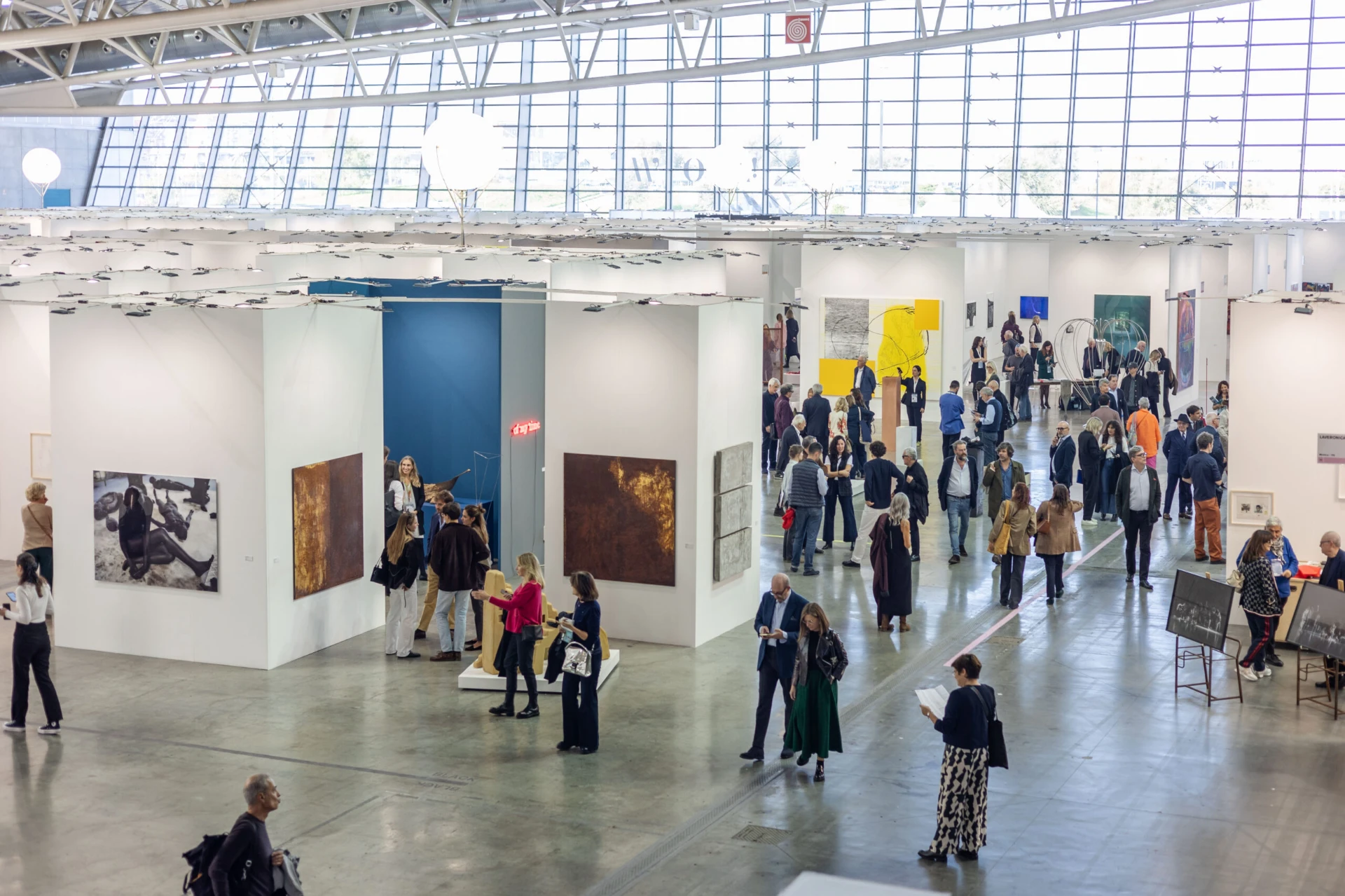
24 Oct 2025
Artissima 2025 starts on October 31st in Turin
By Umbigo
Next
article
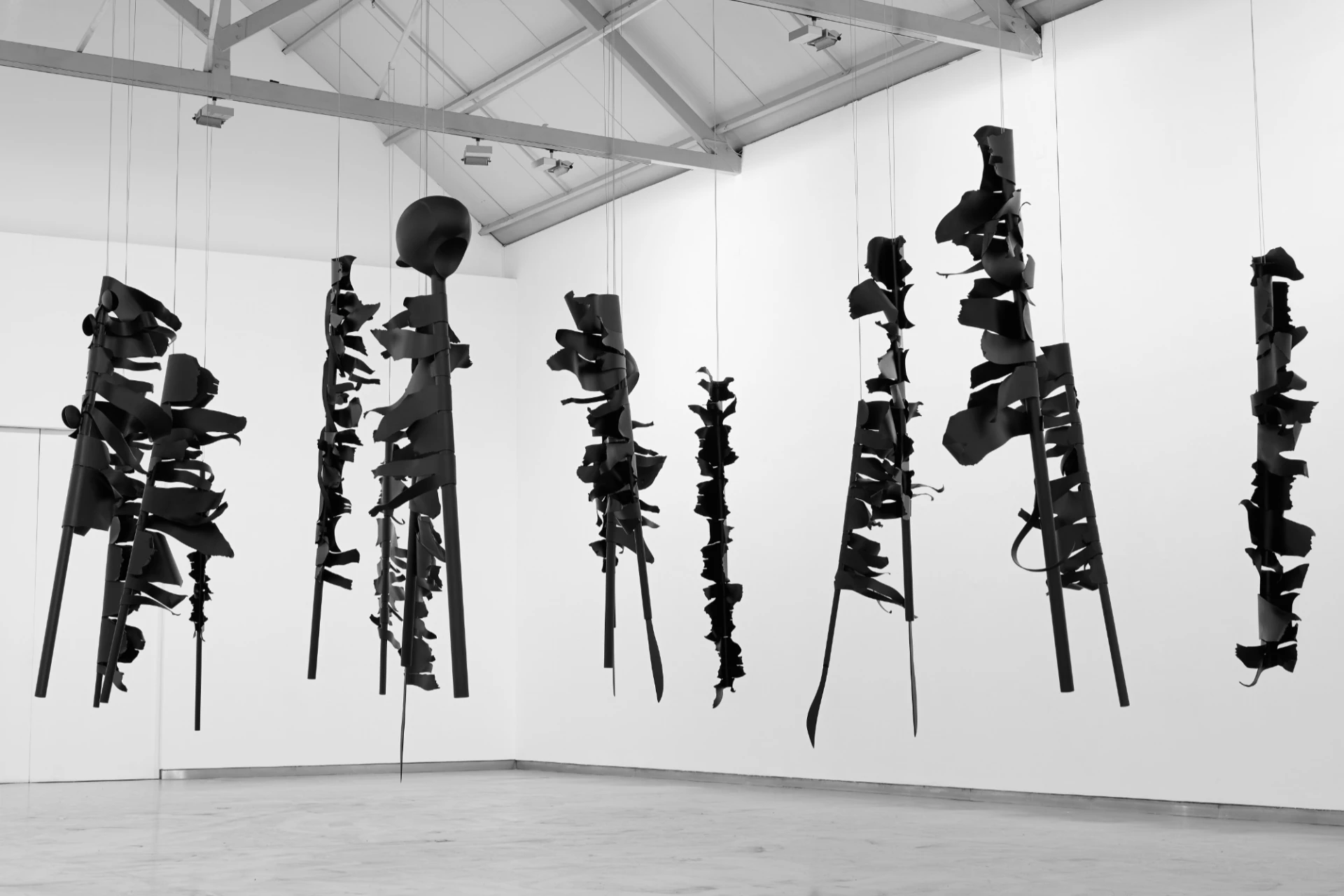
28 Oct 2025
Rui Chafes: nineteen axes to believe in fire
By Frederico Vicente
Related Posts
